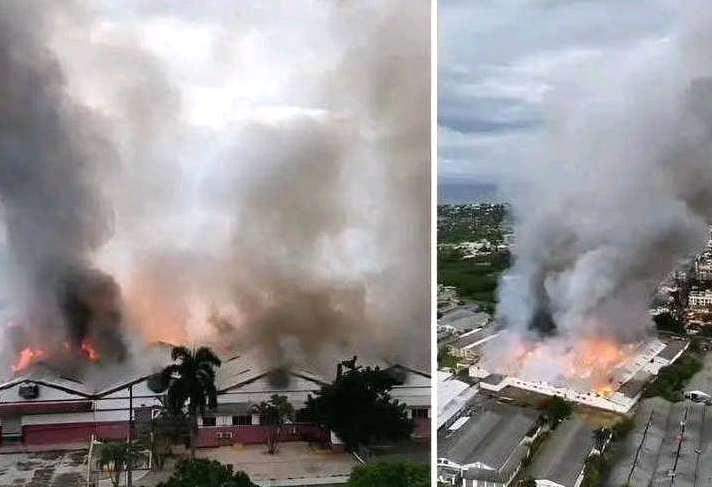A catastrophic 7.7-magnitude earthquake struck large parts of Asia in the early hours of Monday morning, leaving behind a devastating trail of destruction that has shaken communities across southern China, northern Thailand, and Myanmar. What began as a sudden tremor beneath the earth’s surface quickly turned into one of the most powerful and destructive quakes to hit the region in recent years — a disaster that has already claimed dozens of lives and displaced thousands more.
According to the U.S. Geological Survey, the earthquake occurred at 3:42 a.m. local time, when most residents were still asleep. Its epicenter was located deep within a mountainous region along the China–Myanmar border, an area already known for its seismic instability. The quake struck at a shallow depth of roughly 10 kilometers (6 miles) — a factor that dramatically amplified the intensity of the shaking and contributed to the widespread destruction seen across several countries.
Within seconds, entire villages were rocked by violent tremors. Buildings crumbled, roads split open, and power lines snapped, plunging entire towns into darkness. Witnesses described a deafening rumble followed by chaos — screams, collapsing walls, and clouds of dust filling the air. For many, it was the longest and most terrifying minute of their lives.
Lives Lost and Cities in Ruin
Initial reports from local authorities indicate that dozens of people have been confirmed dead, while hundreds more are injured, some critically. Emergency crews are struggling to reach remote areas where communications have been severed and roads blocked by landslides. There are fears that hundreds of residents may still be trapped beneath the debris of collapsed homes, schools, and public buildings.
In southern China, the provinces of Yunnan and Guangxi bore the brunt of the disaster. Entire communities near the epicenter have been flattened. Rescuers, equipped with heavy machinery and trained dogs, are digging through the rubble with their bare hands in search of survivors. Local hospitals are overwhelmed, treating the injured in makeshift tents set up outside the damaged facilities.
Across the border in Myanmar, several rural towns have been cut off entirely due to collapsed bridges and blocked mountain passes. Eyewitness videos shared on social media show temples and monasteries reduced to rubble, with frightened residents camping in open fields for fear of aftershocks.
Tremors Across Thailand
Farther south, in northern Thailand, cities such as Chiang Rai and Chiang Mai experienced strong tremors that sent panicked residents fleeing from their homes and hotels. Windows shattered, old buildings cracked, and alarms echoed throughout the city streets. Schools have been closed indefinitely, and authorities have ordered mass evacuations from several high-rise buildings and older structures deemed at risk of collapse.
Thai disaster management officials have also issued warnings about potential aftershocks, which could strike in the coming days and further weaken already damaged buildings. Local volunteers, military units, and emergency responders are working side by side to assess structural damage and provide shelter to displaced families.
Rescue Efforts and Global Response
Rescue operations are now underway across three nations. China’s Ministry of Emergency Management has deployed thousands of personnel, including medical teams, engineers, and search-and-rescue units. Helicopters have been seen airlifting survivors from remote areas, while humanitarian organizations are setting up emergency supply centers with food, water, and blankets.
In Myanmar, rescue efforts have been complicated by ongoing political and logistical challenges. Despite limited resources, local communities have come together to assist one another, with monasteries opening their doors as shelters and volunteers distributing aid to those who have lost everything.
Meanwhile, Thailand’s government has offered to coordinate cross-border assistance, and international agencies — including the United Nations Office for the Coordination of Humanitarian Affairs (OCHA) and the Red Cross — have pledged emergency funding and technical support.
Aftermath and Uncertain Days Ahead
Experts warn that the full extent of the devastation may not be known for several more days, as communication lines remain down in the most affected areas. Satellite imagery shows widespread damage to infrastructure — collapsed highways, broken pipelines, and cracked dams — raising concerns about potential flooding and contamination of water supplies.
Seismologists have cautioned that aftershocks measuring up to magnitude 6 could continue throughout the week, threatening rescue operations and further damaging weakened buildings. Authorities are urging residents to remain outdoors and avoid reentering their homes until they are declared structurally safe.
For now, the region remains on high alert, united in grief but also in resilience. Across Asia, prayers, donations, and messages of solidarity are pouring in. As day breaks over the disaster zone, the painful task of recovery begins — a process that will take not just weeks or months, but possibly years.
What remains clear is that this earthquake has not only shaken the earth but also tested the strength and spirit of the millions who call this region home. In the face of destruction, stories of courage, compassion, and unity are beginning to emerge — proof that even amid the worst tragedies, humanity endures.
